Содержание
- 2. Observation 1: Hot liquid lava spilling down from the volcano onto Earth's surface cooled and hardened
- 3. Understanding the Exact mechanisms of melting and solidification : Answer the fundamental questions: How do igneous
- 4. How do Igneous rocks differ from one another ? Classify rock samples by: Texture Mineral and
- 5. A) Texture: first division of igneous rocks is made on the differences in mineral crystal size
- 6. 1) Volcanic Rocks: Volcanic rocks are formed from lava during volcanic eruptions. {Lava is the term
- 7. 2) Laboratory study of crystallization: Magma The first tiny crystals form a pattern. Other atoms or
- 8. 3) Granite: Study surrounding sedimentary rocks Minerals of sedimentary rocks in contact with the granite are
- 9. Huttons Proposal: Granite forms from a hot molten material that solidifies deep in the Earth. The
- 10. Igneous Rocks
- 11. Igneous Rocks Intrusive Igneous rocks Texture is linked to the rate and therefore the place of
- 12. Igneous Rocks
- 13. Igneous Rocks Terminology: Lavas: Are volcanic rocks formed from hot molten rock. They range in appearance
- 14. B) Chemical and Mineral Composition: Modern classifications now group igneous rocks according to their relative proportions
- 15. Classification of Igneous rocks: identical in composition and differed only in texture. Basalt: is an extrusive
- 16. Igneous Rocks (Classification model) Types Of Magma
- 17. Felsic Rocks Group Are poor in Fe and Mg / rich in Si minerals. Si rich
- 18. Intermediate Igneous Rocks Group Are the midway between the felsic and mafic igneous rocks. These rocks
- 19. Mafic Igneous Rocks Group Are high in pyroxenes and olivines. Relatively poor in Si rich Mg/Fe,
- 20. Ultramafic Igneous Rocks Group Consist primarily of mafic minerals and contain less than 10% feldspar. Peridotite:
- 21. Igneous Rocks There is a strong correlation between: Mineralogy Temperatures Crystallization or melting Viscosity: The measure
- 22. How do Magmas Form? Contradiction: A) Earth transmits earthquake waves and the bulk of the planet
- 23. Rock melting (From laboratory experiments): Rocks melting point depends on: Composition Conditions of temperature Conditions of
- 24. Rock melting (Temperature): Observation Discovered that a rock does not melt completely at any given temperature.
- 25. Rock melting (Temperature): Partial melts (determines different kinds of magma) Different temperatures Different regions of Earth's
- 26. Rock melting (Pressure): Pressure increases with depth as a result of the increased weight of overlying
- 27. Rock melting (Water content): Observation Water is present in some magmas. The compositions of partial and
- 28. Formation of Magma Chambers: Physical understanding: Substances are less dense in liquid form than in the
- 29. Formation of Magma Chambers: Magma chambers: Magma-filled cavities in the lithosphere that form as rising drops
- 30. Igneous Rocks Magma chambers:
- 31. Magma Formation: Field +Laboratory observation Volcanoes (land + under the sea) provide molten rocks. Give information
- 32. Continue
- 33. Magmatic Differentiation: Discussion about rock melting Questions? What accounts for the variety of igneous rocks? Are
- 34. Magmatic Differentiation: Occurs because different minerals crystallize at different temperatures. Crystallization process: The composition of the
- 35. Fractional Crystallization: Process by which the crystals formed in a cooling magma are segregated from the
- 36. Igneous Rocks Example of Fractional Crystallization : Palisades Intrusion
- 37. Igneous Rocks Evidence of Fractional Crystallization : Palisades Intrusion
- 38. Igneous Rocks Magmatic Differentiation and Types of Magma Magma types: Basaltic (Mafic) Andesitic/Dacitic (Intermediate) Rhyolitic (Felsic)
- 39. Igneous Rocks Dispute Magmatic differentiation is a more complex process (Still under divelopment) Open questions: A)
- 40. Igneous Rocks Granitic Magma Source rocks of the upper mantle and crust is responsible for the
- 41. Igneous Rocks Forms of Magmatic Intrusions Limitations: Cannot directly observe the shapes of intrusive igneous rocks
- 42. Igneous Rocks Types of representative Igneous Rocks Volcanic (Extrusive rocks) Plutons (Intrusive rocks) Types of Rocks
- 43. Igneous Rocks Plutons Are large igneous bodies formed at depth in the crust. They range in
- 44. Igneous Rocks 2. Breaking off large blocks of rock. Magma pushes its way upward by breaking
- 45. Igneous Rocks Plutons: Batholiths The largest plutons Great irregular masses of coarse-grained igneous rock that by
- 46. Igneous Rocks Sills and Dikes: Are similar to plutons (smaller) and have a different relationship to
- 47. Igneous Rocks Dikes: Are the major route of magma transport in the crust. They are like
- 49. Igneous Rocks Veins (Pegmatites): Are deposits of minerals found within a rock fracture that are foreign
- 50. Igneous Rocks Veins (Pegmatites):
- 52. Скачать презентацию
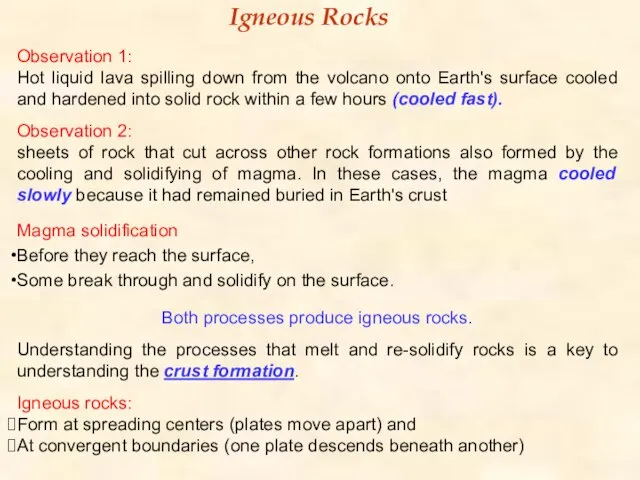
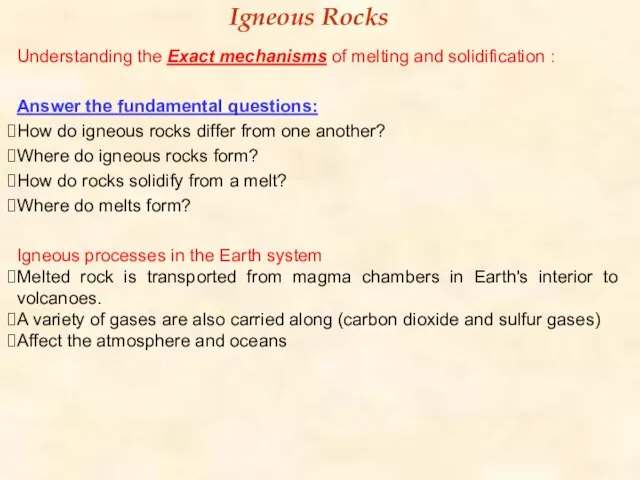
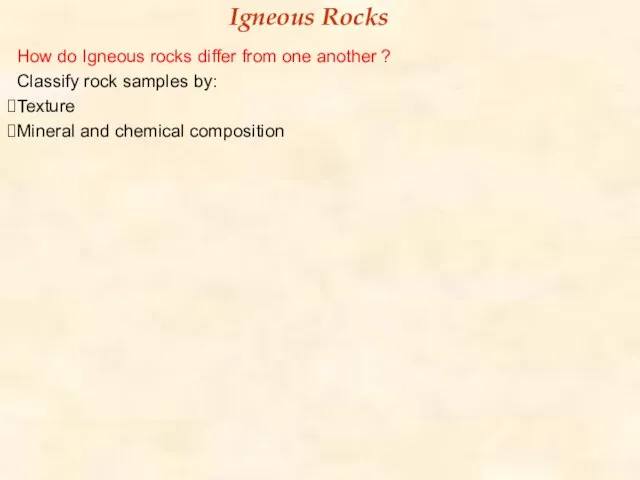
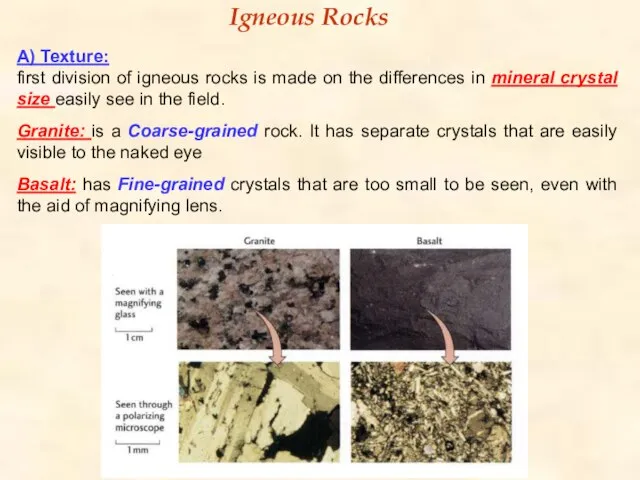
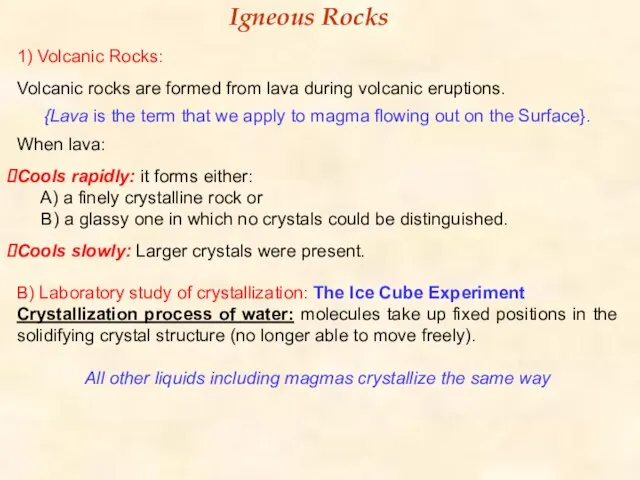
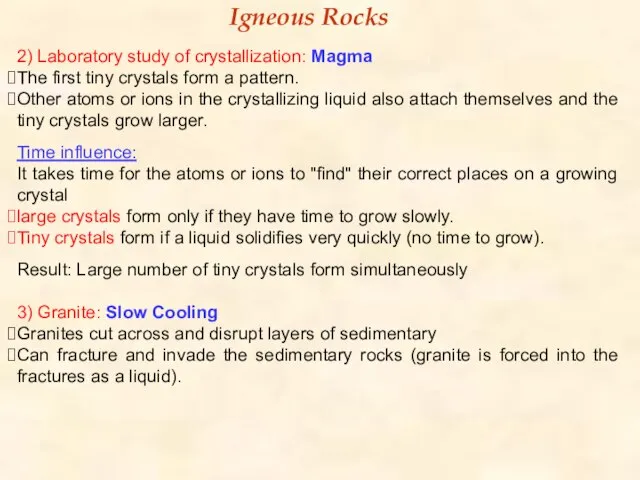
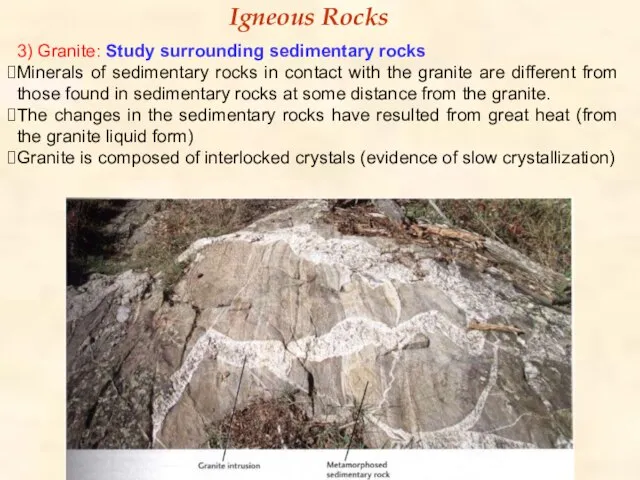
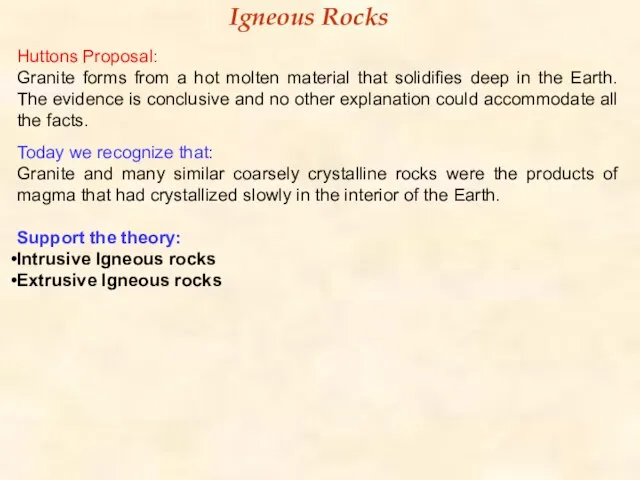
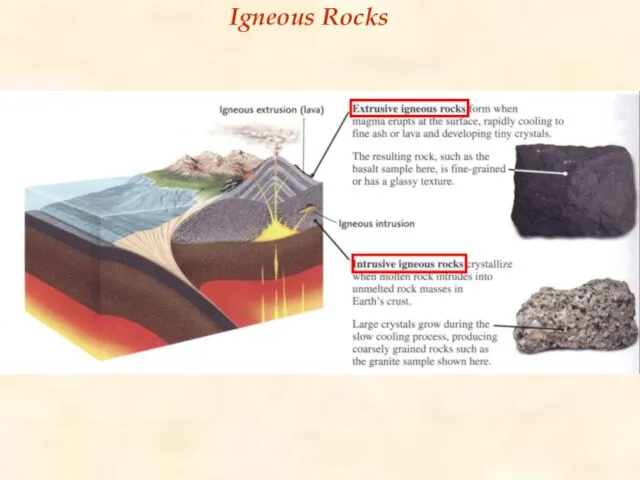


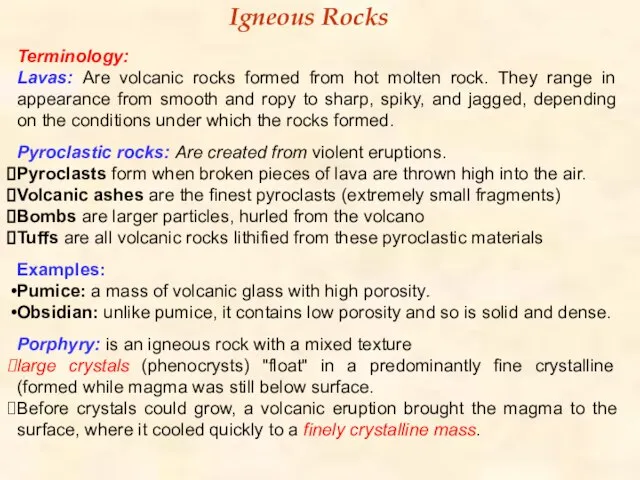
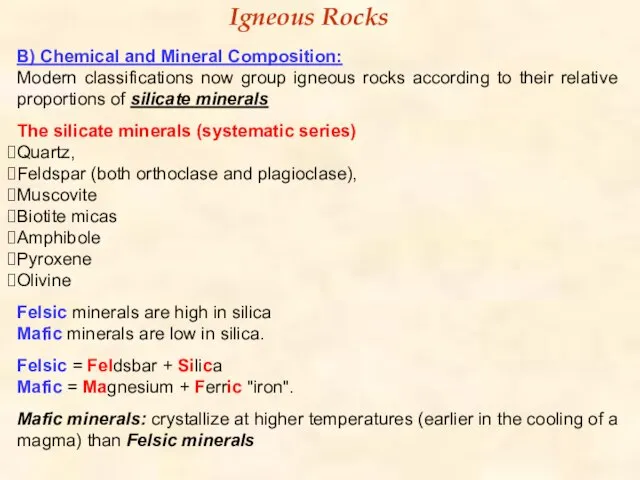



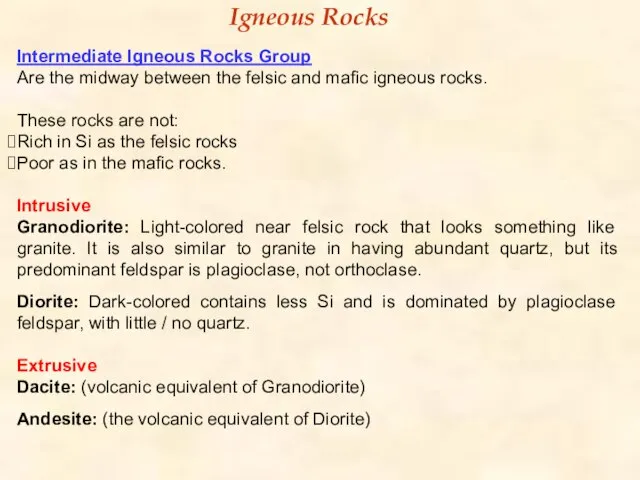
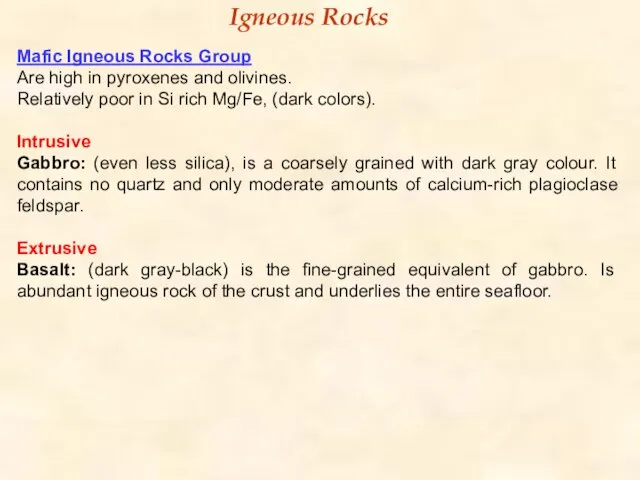
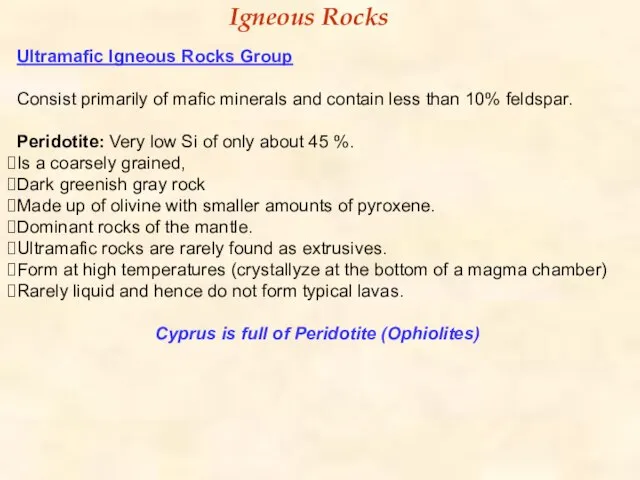

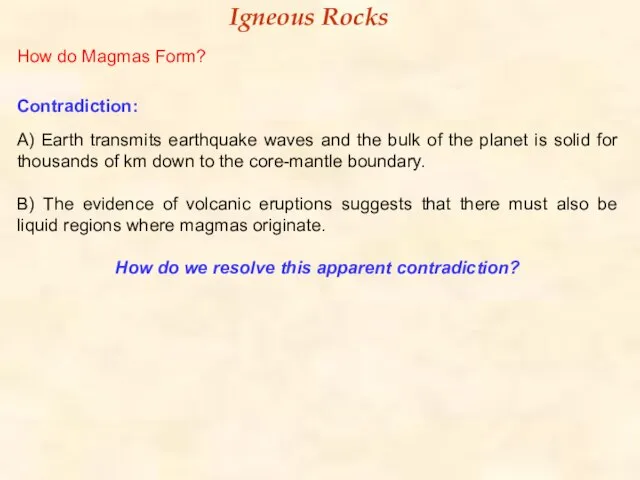
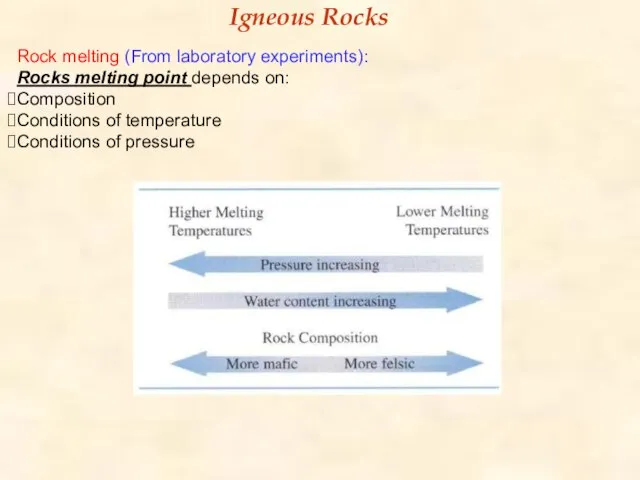

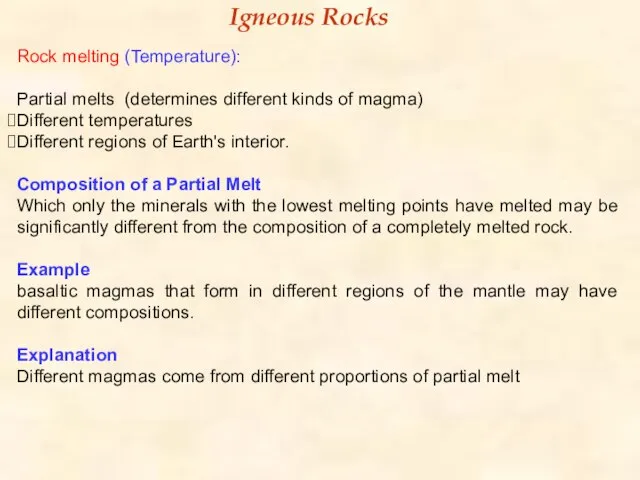
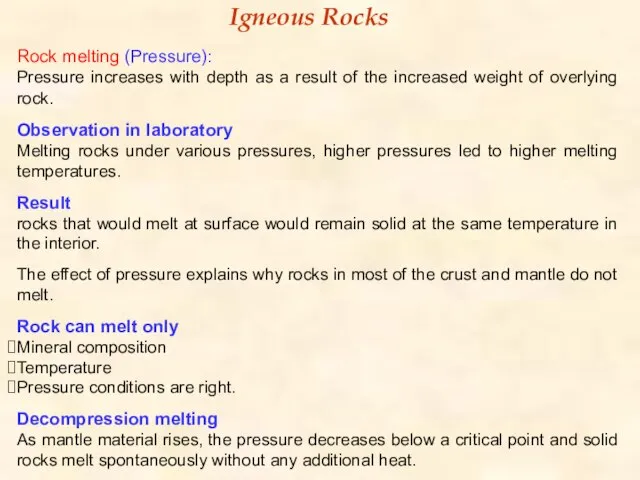
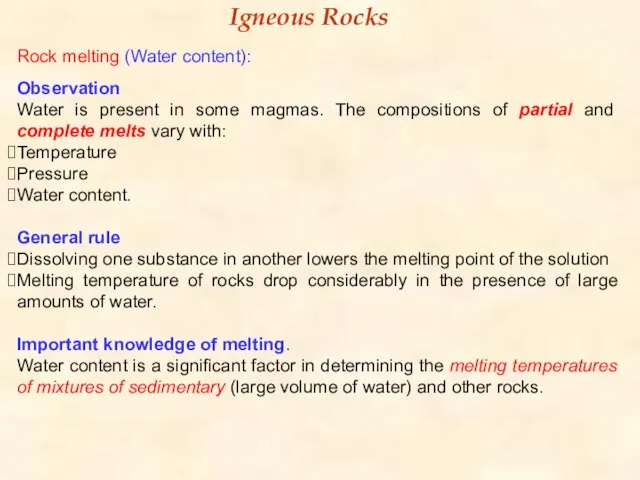
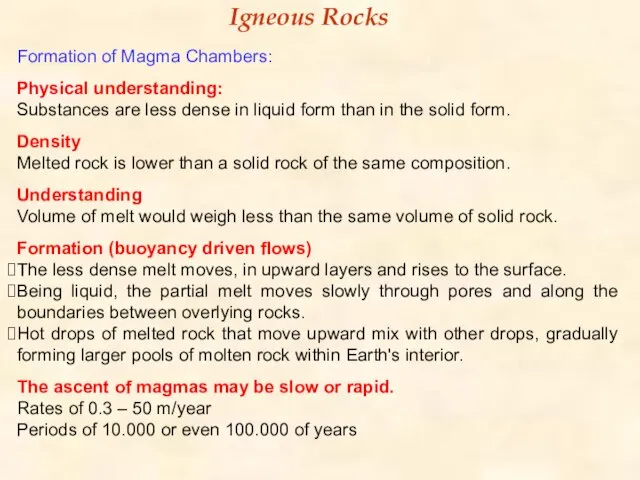

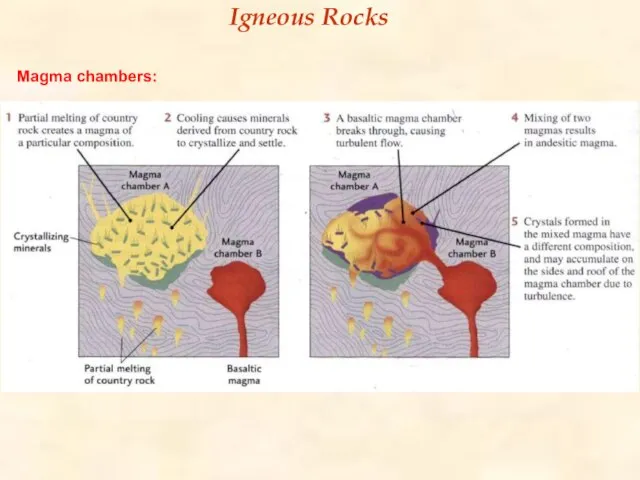
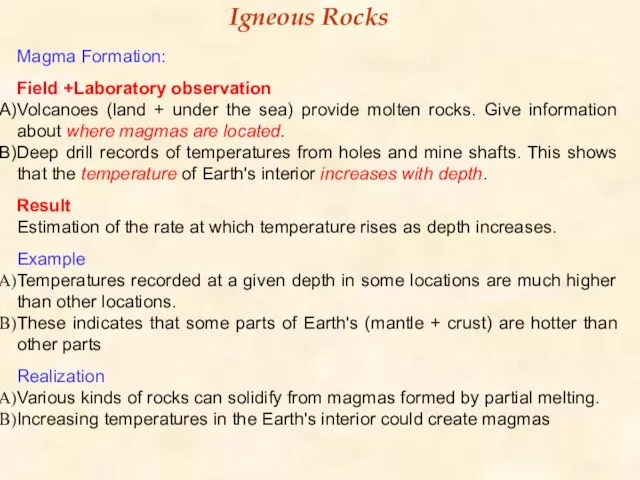

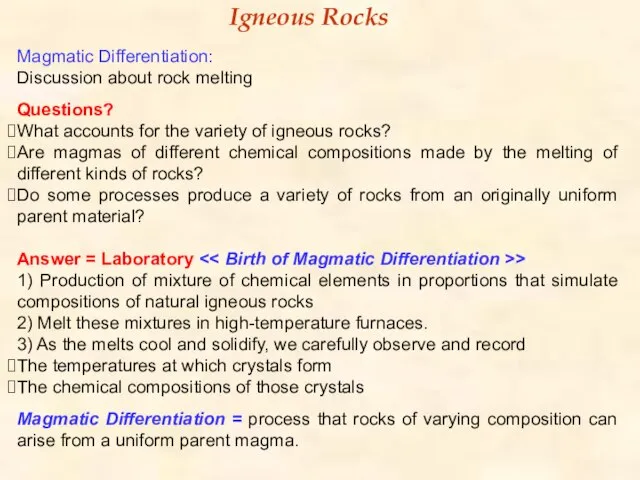
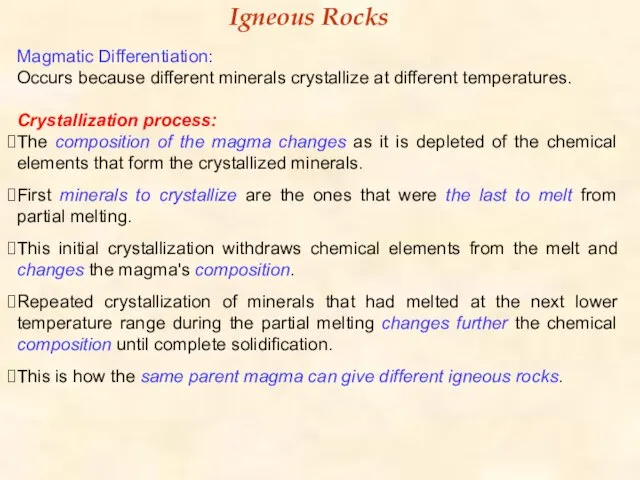
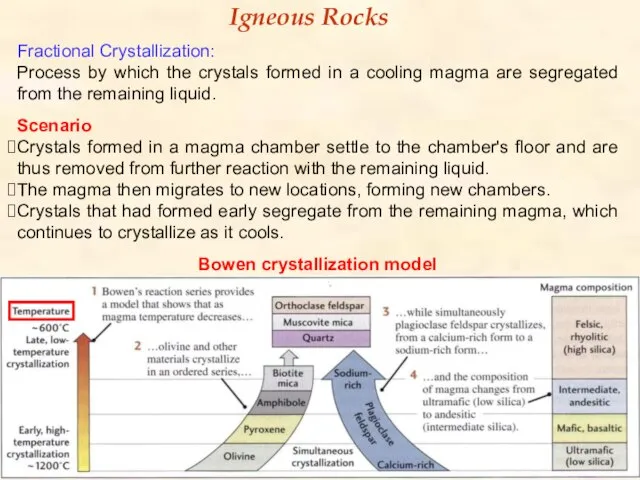
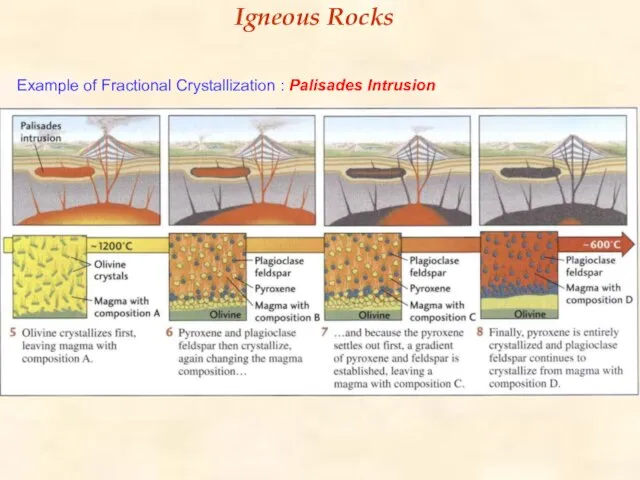
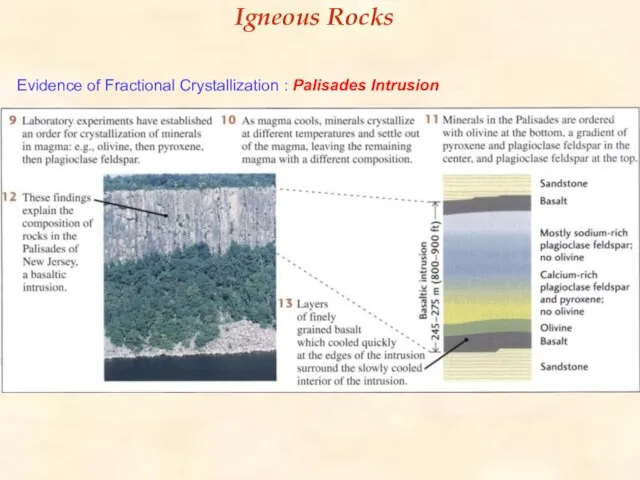
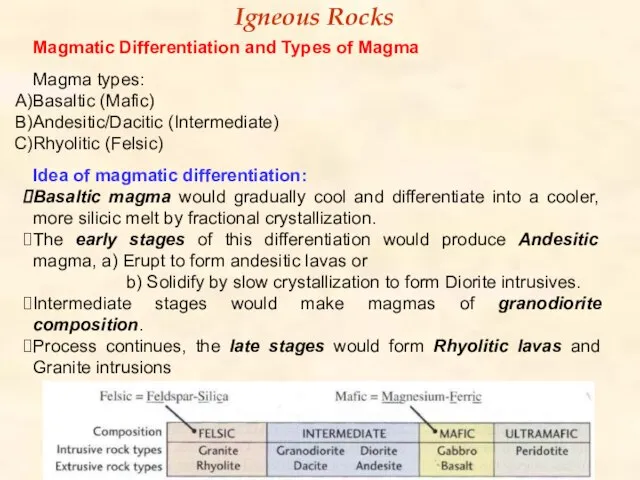
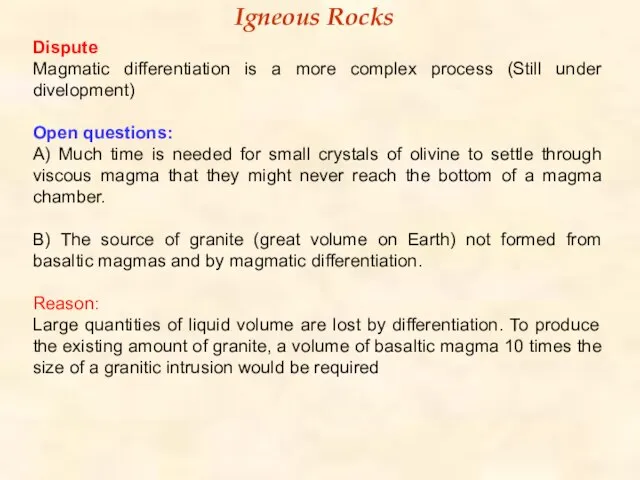

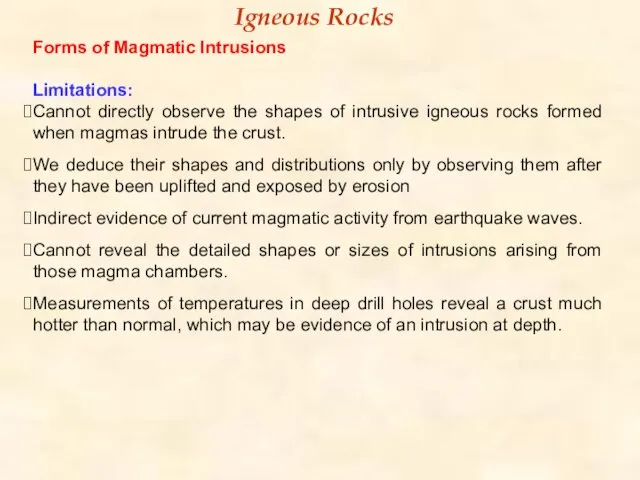
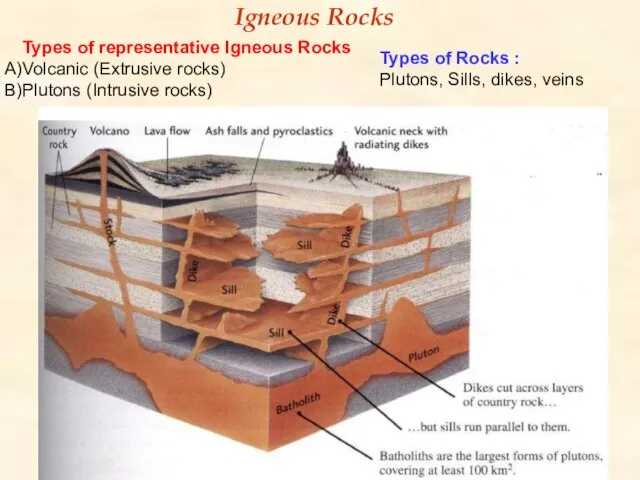
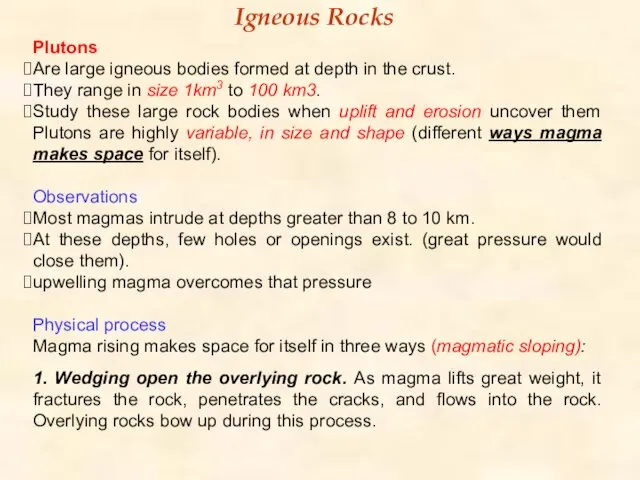


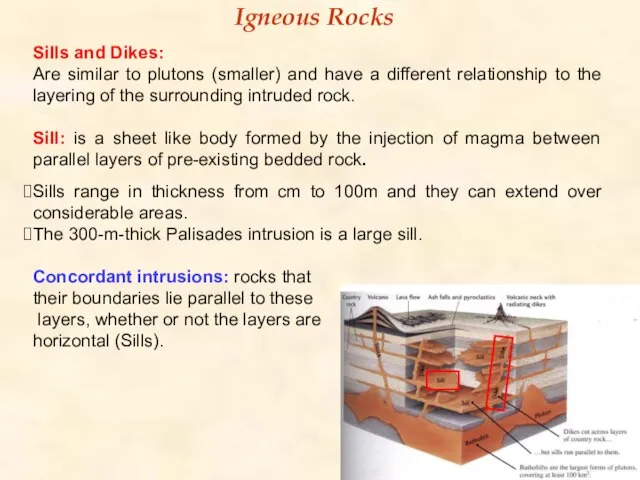


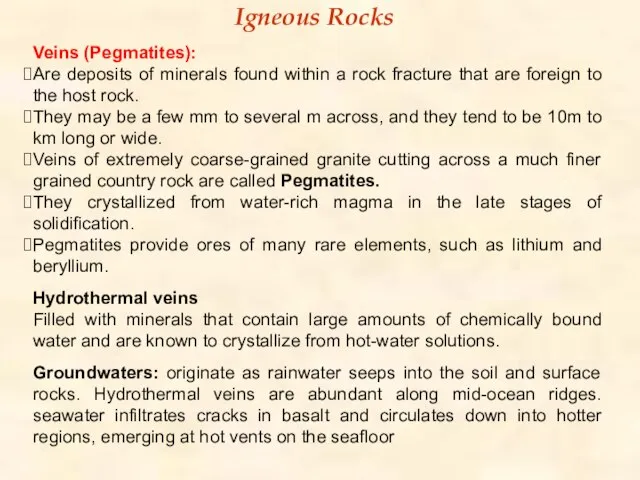
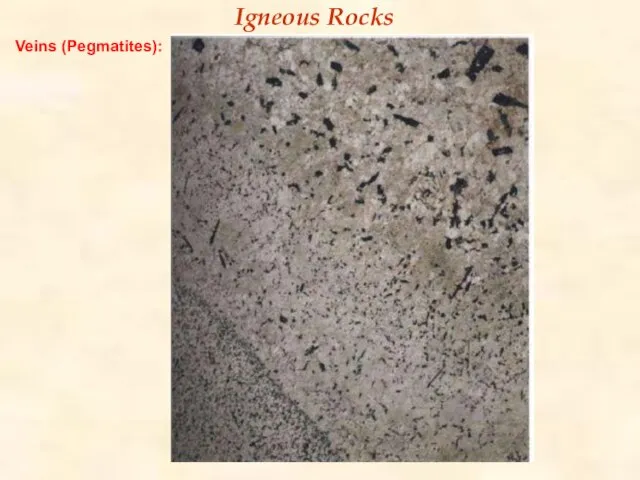
 Встречаем по одёжке
Встречаем по одёжке Презентация на тему Электромагнитные волны. Гипотеза Максвелла
Презентация на тему Электромагнитные волны. Гипотеза Максвелла Лихорадка
Лихорадка Вэллком Шаранга
Вэллком Шаранга Круглый стол построение системы взаимодействия бизнес – инжиниринг – региональный центр инжиниринга – капитал
Круглый стол построение системы взаимодействия бизнес – инжиниринг – региональный центр инжиниринга – капитал Политическая система
Политическая система Жезқазған өңіріне экономикалық-географиялық баға беру
Жезқазған өңіріне экономикалық-географиялық баға беру Определение каналов сбыта
Определение каналов сбыта Образы и мотивы в орнаментах народной вышивки
Образы и мотивы в орнаментах народной вышивки Форум во заедницата
Форум во заедницата Презентация на тему Музыкальные эпохи
Презентация на тему Музыкальные эпохи Прайс-лист на размещение баннерной рекламы на сайте Odnoklassniki.ru
Прайс-лист на размещение баннерной рекламы на сайте Odnoklassniki.ru Региональный центр подготовки и творческого развития школьников Технариум, г. Саратов
Региональный центр подготовки и творческого развития школьников Технариум, г. Саратов Презентация на тему Уголовная ответственность несовершеннолетних
Презентация на тему Уголовная ответственность несовершеннолетних
 Произнеси правильно!
Произнеси правильно! Электромагнитное поле. Электромагнитные волны
Электромагнитное поле. Электромагнитные волны Электромеханические измерительные приборы
Электромеханические измерительные приборы Первый властелин единого Китая
Первый властелин единого Китая Украинская биржа
Украинская биржа Подходы, направления и организация профилактики жестокого обращения и насилия в отношении детей и подростеов
Подходы, направления и организация профилактики жестокого обращения и насилия в отношении детей и подростеов Физическая культура и спорт как социальные явления общества
Физическая культура и спорт как социальные явления общества Устройство для оптического напыления полимерных пленок
Устройство для оптического напыления полимерных пленок Pegas_2017
Pegas_2017 Битва за Берлин
Битва за Берлин Построение системы вовлечения потребителей в процессы сервисного взаимодействия в виртуальной среде И.В. Федоренко. - презентация
Построение системы вовлечения потребителей в процессы сервисного взаимодействия в виртуальной среде И.В. Федоренко. - презентация Тепловые машины. Внутренняя энергия – как её использовать?
Тепловые машины. Внутренняя энергия – как её использовать? ПРОЕКТНАЯ МЕТОДИКА ОБУЧЕНИЯ - ПРОЕКТНАЯ МЕТОДИКА ОБУЧЕНИЯ - педагогическая технология нового образования.
ПРОЕКТНАЯ МЕТОДИКА ОБУЧЕНИЯ - ПРОЕКТНАЯ МЕТОДИКА ОБУЧЕНИЯ - педагогическая технология нового образования. Практические работы как один из способов формирования географических знаний
Практические работы как один из способов формирования географических знаний